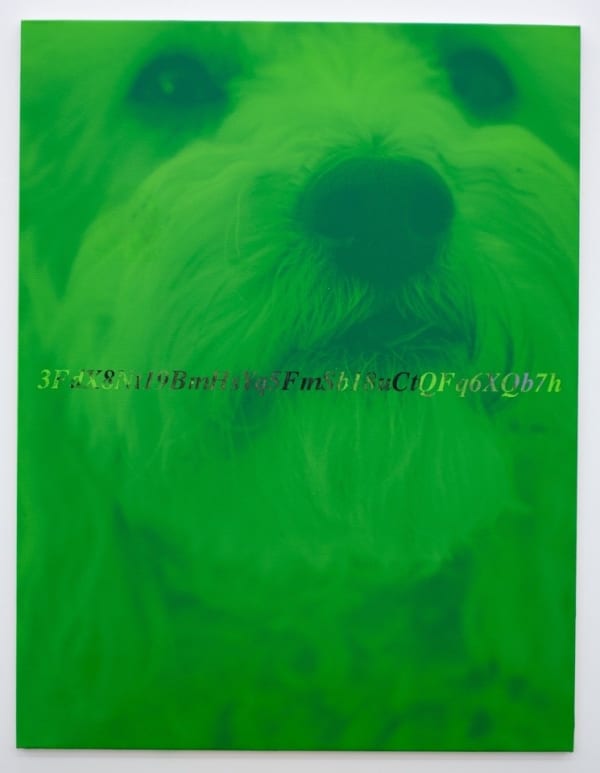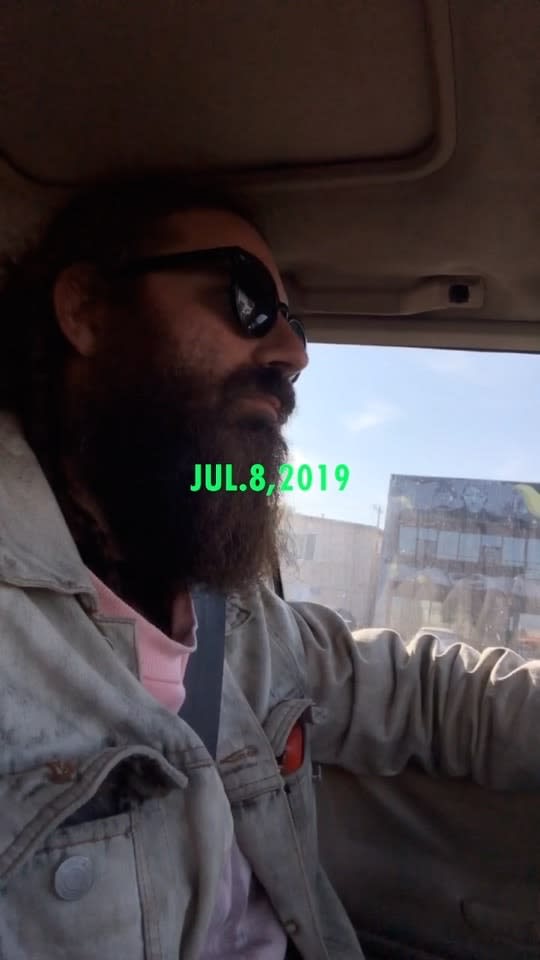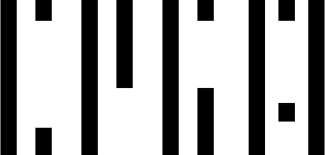Fabian Marti: I LÄBE NOGalerie Peter Kilchmann, Zahnradstrasse, Zurich
Galerie Peter Kilchmann is pleased to announce the gallery’s fifth solo exhibition I LÄBE NO (I am still alive) from Los Angeles-based, Swiss artist, Fabian Marti (*1979 in Fribourg).
-
 Fabian MartiI LÄBE NO (Lutz & 3BYuvyYpcayG8TCWShgPv8nrbB5BzTnkvU), 2019Acrylic, ink print on canvas153 x 117.5 cm (60.2 x 46.3 in.)
Fabian MartiI LÄBE NO (Lutz & 3BYuvyYpcayG8TCWShgPv8nrbB5BzTnkvU), 2019Acrylic, ink print on canvas153 x 117.5 cm (60.2 x 46.3 in.) -
 Fabian MartiI LÄBE NO (Lutz & Abstraktion Nr. 1), 2019Acrylic, ink print on canvas153 x 117.5 cm (60.2 x 46.3 in.)
Fabian MartiI LÄBE NO (Lutz & Abstraktion Nr. 1), 2019Acrylic, ink print on canvas153 x 117.5 cm (60.2 x 46.3 in.) -
 Fabian MartiI LÄBE NO (Lutz & 3FdX8Nt19BmHsYq5FmSb18uCtQFq6XQb7h), 2019Acrylic, ink print on canvas153 x 117.5 cm (60.2 x 46.3 in.)
Fabian MartiI LÄBE NO (Lutz & 3FdX8Nt19BmHsYq5FmSb18uCtQFq6XQb7h), 2019Acrylic, ink print on canvas153 x 117.5 cm (60.2 x 46.3 in.) -
 Fabian MartiFM Studio Chair (Robert), 2019Acrylic, c-print on wood73.5 x 47 x 43 cm (28.9 x 18.5 x 16.9 in.)Unique
Fabian MartiFM Studio Chair (Robert), 2019Acrylic, c-print on wood73.5 x 47 x 43 cm (28.9 x 18.5 x 16.9 in.)Unique -
 Fabian MartiFM Studio Chair (Venice), 2019Acrylic, c-print on wood73.5 x 47 x 43 cm (28.9 x 18.5 x 16.9 in.)Unique
Fabian MartiFM Studio Chair (Venice), 2019Acrylic, c-print on wood73.5 x 47 x 43 cm (28.9 x 18.5 x 16.9 in.)Unique -
 Fabian MartiFM Studio Chair (Such a Good Girl), 2019Acrylic, c-print on wood73.5 x 47 x 43 cm (28.9 x 18.5 x 16.9 in.)Unique
Fabian MartiFM Studio Chair (Such a Good Girl), 2019Acrylic, c-print on wood73.5 x 47 x 43 cm (28.9 x 18.5 x 16.9 in.)Unique -
 Fabian MartiI.L.N. Chapter 1 (Stories 2017-2019), 2019Single channel video, color, sound, 22.50 hours
Fabian MartiI.L.N. Chapter 1 (Stories 2017-2019), 2019Single channel video, color, sound, 22.50 hours
Presentation variableEd. 2/3 (+ 1 AP) -
 Fabian MartiUntitled, 2019C-print40 x 60 cm (15.7 x 23.6 in.)
Fabian MartiUntitled, 2019C-print40 x 60 cm (15.7 x 23.6 in.)
41.5 x 61 cm (16.3 x 24.0 in.), framed
















